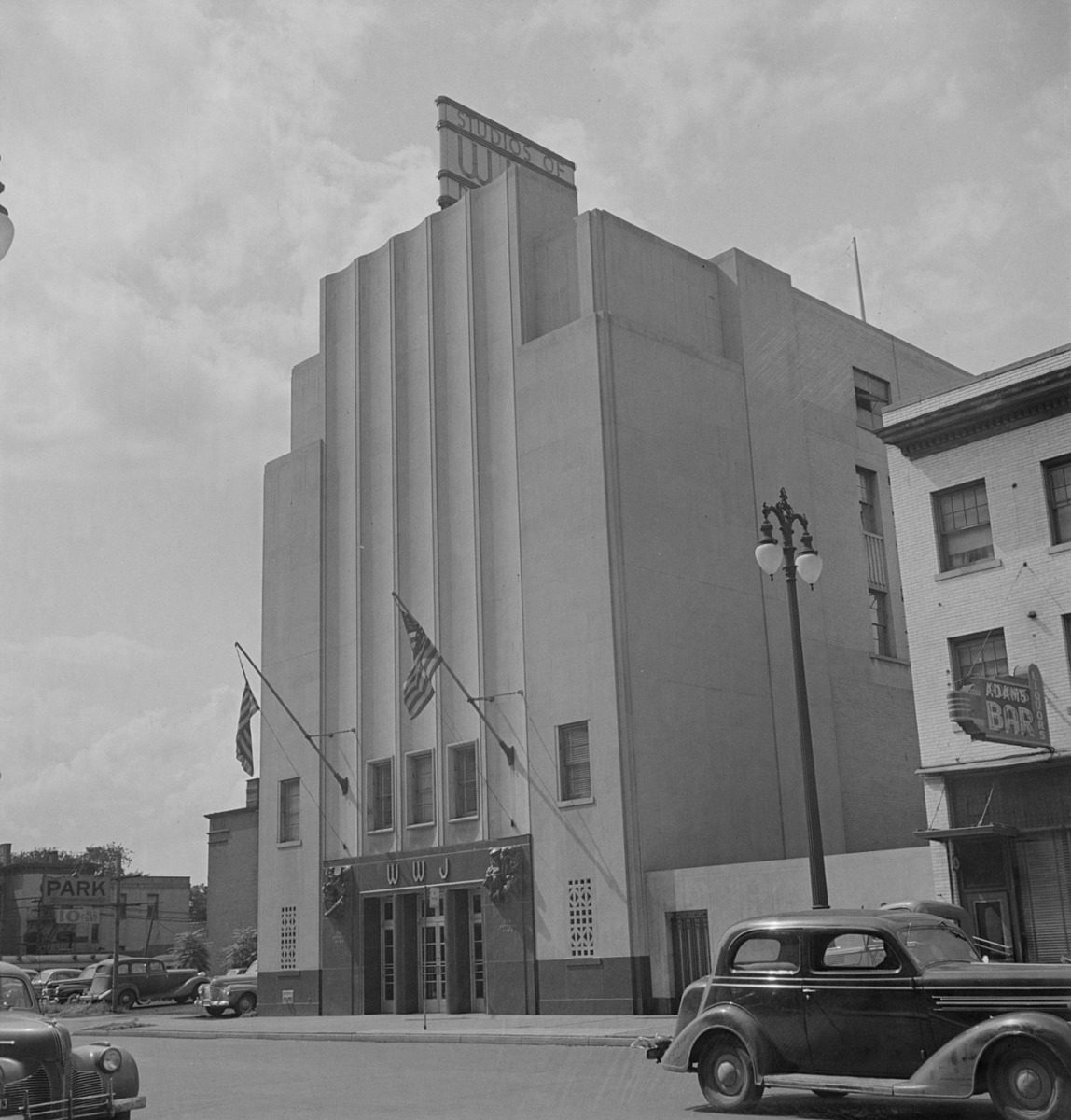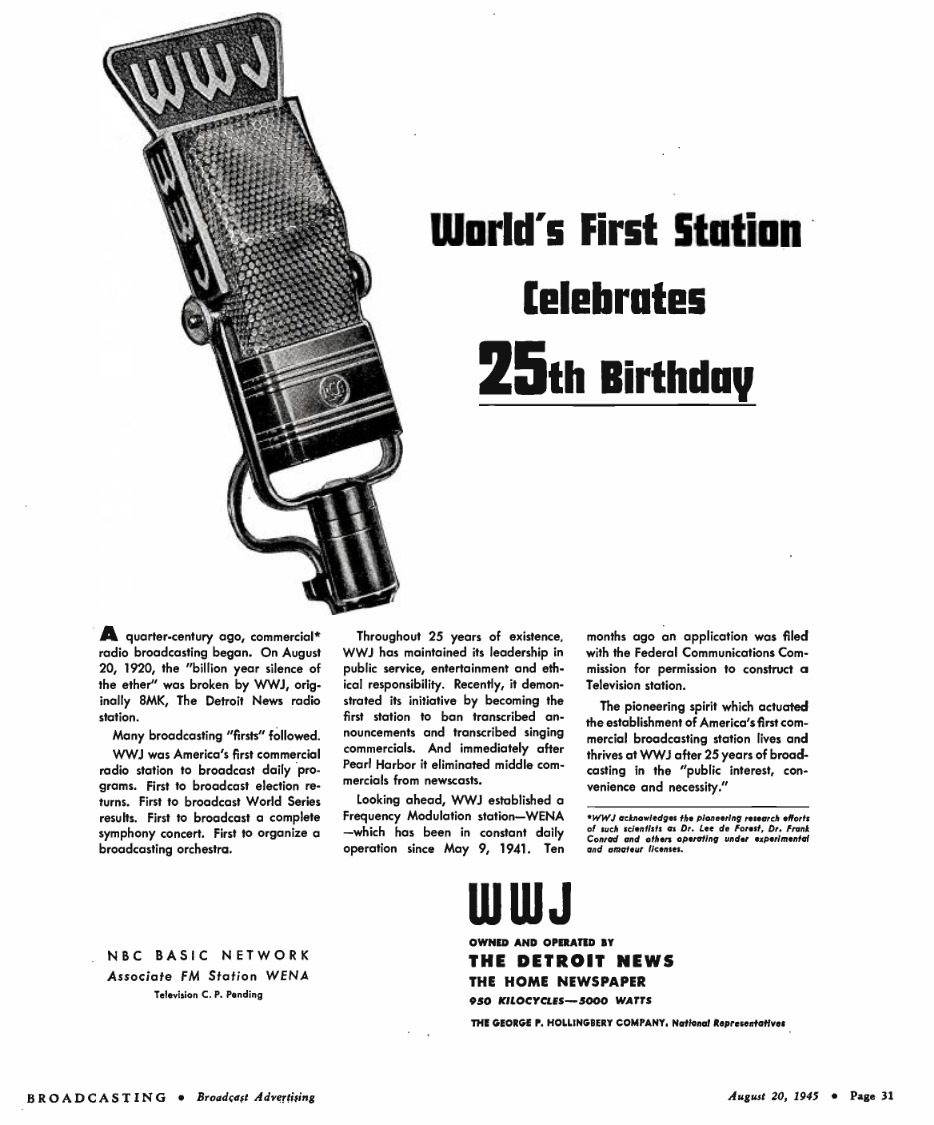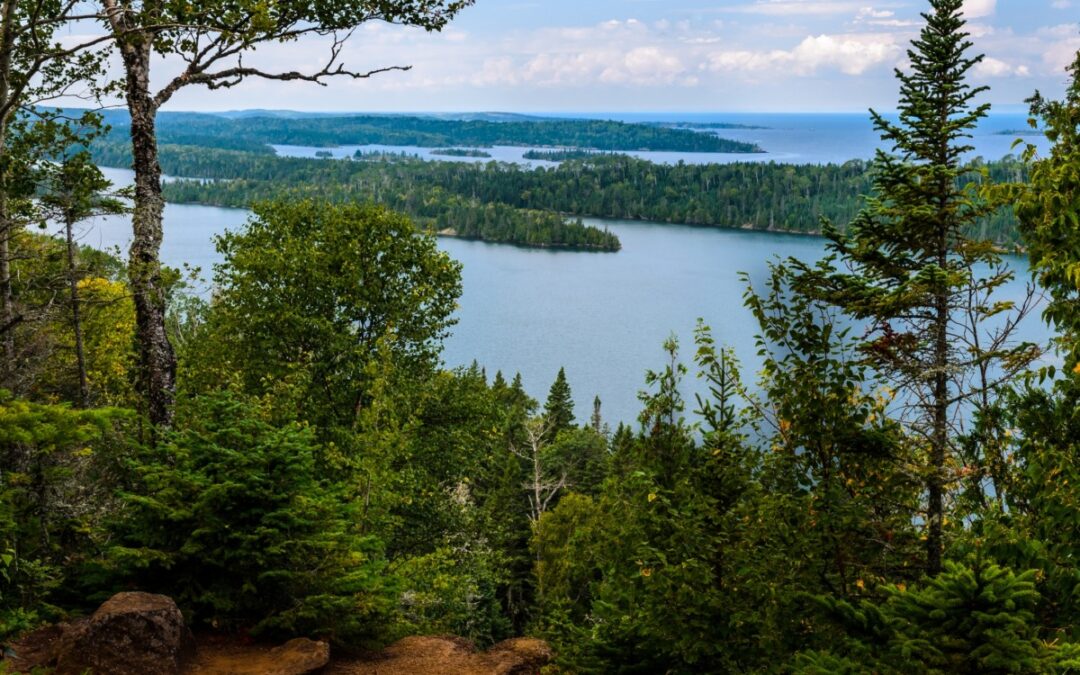
August 1920 8MK publicity photo. (Image via Public Domain)
How WWJ changed the media landscape in Detroit.
More than a hundred years ago, in the early 20th century, the primary way that people got their news was via newspaper.
That is, until a revolutionary technology was introduced that allowed people nearly instant access to information.
Today, we’re bringing you a brief history of WWJ Newsradio—Michigan’s first radio station.
Complicated beginnings
The story of WWJ begins with the Scripps family, founders of the Detroit News. Primarily, William E. Scripps played a major role in bringing the station to life.
At the turn of the 20th century, newspapers were still the main form of accessing news for most folks, but radio technology was quickly advancing. In Michigan, the Detroit News was one of the state’s biggest newspapers.
In 1902, Detroit News publisher James E. Scripps took an interest in radio technology and became an early investor in radio pioneer Thomas E. Clark’s communication equipment company. At the time, the main form of radio communication was radiotelegraphy—operators could send Morse code messages via radio waves that could be translated into text. During this time period, James took his son, William E. Scripps, to view one of these demonstrations, and the family remained in contact with Clark.
During World War I, however, the use of radio receivers by private citizens was banned for a short period. When that ban was lifted in 1919, William J. Scripps, the son of William E. Scripps, now the Detroit News‘ vice-president and managing director, became interested in the technology as well. William J. Scripps would spend hours on his radio finding and listening to stations.
Since the medium was still evolving, most transmissions at the time continued to be in Morse code, but when William J. Scripps was able to tune into an audio transmission, it inspired William E. Scripps to begin investigating whether the Detroit News could start their own audio broadcasts utilizing this technology.
Scripps consulted with Clark and determined that new radio technology would make this plan viable. Later that year, Scripps and Clark brought forward a proposal to the newspaper’s board of directors to fund a radio station, which ultimately proved unsuccessful. While Clark stepped away from planning, Scripps carried on.
One year later, Scripps was approached by Radio News & Music, Inc. The new company was developing broadcasting services and promoting itself to newspapers across the country. The Detroit News ended up being their only newspaper customer.
In May of 1920, the News leased a radio transmitter through Radio News & Music to develop their radio station.
Fearing blowback from other newspapers as to how this new service would affect their sales, work on the station was done discreetly, even going as far as hiding the involvement of the Scripps family. After a few months of construction, the station was ready for launch, broadcasting from the second floor of the Detroit News‘ building.
Bringing radio to the masses

WWJ Station building built in 1936, photo taken around 1942. (Image via Public Domain)
The News‘ station originally operated under a standard amateur radio license, with the call sign 8MK.
Its first test broadcast was on Aug. 20, 1920—to a limited audience of amateur radio enthusiasts. Eleven days later, following successful testing, the station officially launched on Aug. 31, 1920 with a front page announcement on the Detroit News advertising its “Detroit News Radiophone.” The service would air every evening except Sundays. It initially launched with election results and vocal performances. Shortly after, it added music, general news reports, sports play-by-plays, concerts, and more.
Just a little over a year later, the station received its first commercial license and changed its call letters to WBL. Just a few months later, on March 3, 1922, the station once again changed its call letters to WWJ, which is what it’s still known as to this day.
In 1936, as the station continued to grow, WWJ moved its operations to a newly constructed art deco building across the street from the Detroit News building.
The first commercial station?

WWJ claimed to be the “World’s First Station” in this 1945 ad. (Image via Public Domain)
There is a long-standing dispute over whether WWJ was the first radio station, with several other stations across the US also claiming the fact.
A big reason for the dispute is that for a long period, the US government didn’t have set guidelines for what defined a “broadcasting station.”
While KDKA in Pittsburgh was founded on Nov. 2, 1920—weeks after the launch of 8MK—it has also claimed to be the “Pioneer Broadcasting Station of the World.” Part of the argument is how involved the Detroit News was in the operation prior to receiving its commercial license in 1921.
Several other stations have also claimed the title, including KCBS in San Francisco. That station traces its roots back to 1909 and bills itself as “The World’s First Broadcasting Station.”
While a concrete answer is up for interpretation, this is for certain: National Radio Day takes place annually on Aug. 20—the day that 8MK launched.
Evolution to modern times
On March 29, 1941, WWJ moved its frequency to 950 AM—where it still remains.
During the 1940s, WWJ’s programming focused on locally produced news, shows, and music. Following the end of World War II, the advancements of TV forced WWJ to shift away from variety programming (think radio plays) and towards more music and news programming.
Several decades later, in 1973, advancements in FM radio (which had better audio quality than AM) led WWJ to drop music in favor of all-news programming.
In 1989, WWJ was purchased by CBS Radio. Audacy acquired CBS radio in 2017.
Although Audacy has faced recent economic troubles, WWJ—now operating out of studios in Southfield— continues its all-news format and consistently ranks as one of Detroit’s most popular stations among adult listeners.

A historian explores Michigan’s secret bootlegging empire
While we all know that crime doesn't pay, the bootleggers and gangsters of a century ago have always held a certain glamour in popular imagination....

That one time in Michigan: When we established one of the most isolated national parks
A quick history of Isle Royale National Park. It's been nearly 100 years since Congress authorized one of the country's most beautiful and remote...

That one time in Michigan: When an abolitionist called Battle Creek home
Did you know that one of the most famous abolitionists in US history called Michigan home? Sojourner Truth, the legendary activist, lived in...

Black History Month explained: Its origins, celebrations and myths
By HAYA PANJWANI Associated Press WASHINGTON (AP) — Beginning Feb. 1, schools, museums and communities across the nation will mark the start of...

Unpacking Detroit’s strong ties to the Mafia
Many crime families and mafia members have called Detroit home over the years. Learn about the Motor City’s mafia connections and ties to organized...







